Author: The Editors
Older and wiser?
9 October 2012 | This 'n' that
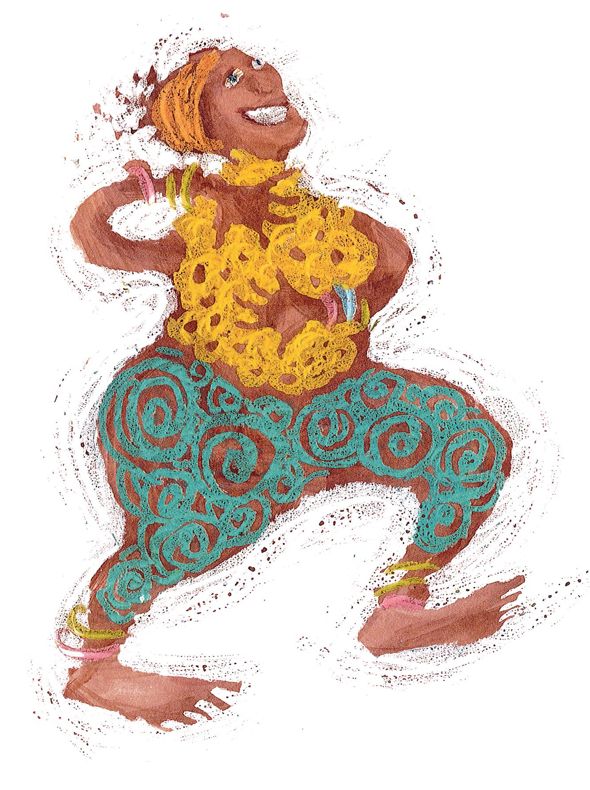
Illustration: Virpi Talvitie (from Täyttä päätä. Runoja ikääntyville, ‘Full steam ahead. Poems for ageing people’, edited by Tuula Korolainen and Riitta Tulusto)
Nobody can claim that old age is hot, or media-sexy. Yes, but what are older people really like? Are they the bingo-obsessed grannies in floral frocks or old geezers living in the past of popular opinion?
No longer. In just a few years the baby-boom generation will be entering their seventies, when ‘old age’, in its current Western definition, begins. (Until then, senior citizens are allowed to remain ‘adults’.)
Are the old people’s homes ready for them? This new elderly generation will be wanting to listen to Elvis, the Rolling Stones and the Beatles rather than the tango. More…
Sex, violence and horror, anyone?
20 September 2012 | Letter from the Editors
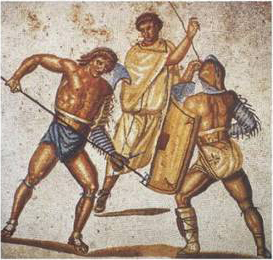
Gladiatorial entertainment: Mosaic from the Roman villa at Nennig (Germany), 2nd-3rd century AD. Picture: Wikipedia
In our last Letter, ‘Art for art’s sake’, we pondered how the efforts of making art (or design) profitable and exportable result, in public discourse, in the expectation that art (or design) should aid the development of business.
Not a lot is talked about how business can help art.
Art of course, is in essence ‘no use’, art doesn’t exist in order to increase the GDP (although nothing prevents it from doing so, of course).
The Finnish poet-author-translator Pentti Saarikoski (1937–1983) argued that art needs no apologies whatsoever: ‘What’s wrong with “Art for art’s sake”? – any more than bread for bread’s sake?
‘Art is art and bread is bread, and people need both if they are to have a balanced diet.’
Defining what is entertainment is and what is art is not always significant or necessary. The boundaries can be artificial, or superficial. But occasionally one wonders where the makers of ‘entertainment’ think it’s going. Entertainment for entertainment’s sake?
The Finnish Broadcasting Company (YLE) recently announced a new radio play series. It is, it said, a series that differs stylistically from traditional radio plays; it seeks a new and younger audience. The news item was headlined: ‘The new radio play drips with sex, violence and horror.’ In a television interview the director said that the radio dramaturge who had commissioned the series had described what the (new, younger) listeners should experience: ‘They should feel thrilled and horny all the time.’ More…
Government prize for translation 2012
14 September 2012 | In the news
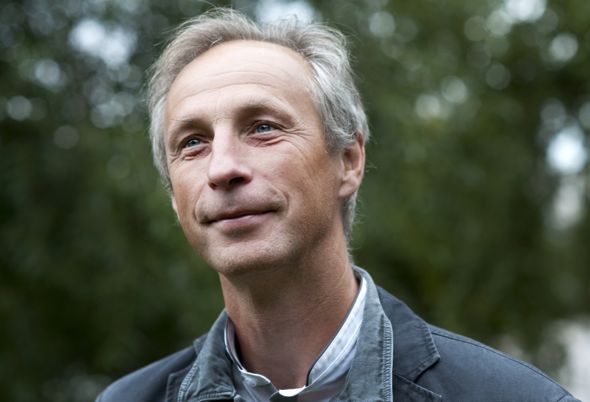
Vladimír Piskoř. Photo: Charlotta Boucht
The Finnish Government Prize for the Translation of Finnish Literature of 2012 – worth €15,000 – was awarded to the Czech translator Vladimír Piskoř.
Piskoř (born 1960), graduated from the Charles University of Prague in 1984, majoring in Finnish. Since the early 1990s he has translated almost 30 titles, most by contemporary authors, including Kristina Carlson, Kari Hotakainen, Leena Krohn, Rosa Liksom, Asko Sahlberg, Juha Seppälä, Petri Tamminen and Maria Peura.
‘I personally am fond of the novels by Kari Hotakainen: I sometimes play with the idea of becoming a writer myself, and I find his style and themes particularly interesting. Kristina Carlson’s latest novel Herra Darwinin puutarhuri (‘Mr Darwin’s gardener’, 2010) is a truly inspiring work both as a reader and a translator,’ he says.
Piskoř is currently working on Kari Hotakainen’s novel Jumalan sana (‘The word of God’) and Leena Lander’s historical novel Käsky (‘Command’). In 2006 he was awarded the Czech translators’ special prize for the novel Höyhen (‘Feather’) by Asko Sahlberg.
Vladimír Piskoř received his award in Helsinki on 10 September from State Secretary Jarmo Lindén; he thanked Piskoř for the work he has done for the last twenty years, particularly in the field of contemporary Finnish fiction.
The prize has been awarded – now for the 38th time – by the Ministry of Education and Culture since 1975 on the basis of a recommendation by FILI – Finnish Literature Exchange.
Comics come to Helsinki
7 September 2012 | In the news
 Comics are the ‘ninth art’, according to the organisers of the 27th Helsinki Comics Festival, which runs from 7 to 9 September.
Comics are the ‘ninth art’, according to the organisers of the 27th Helsinki Comics Festival, which runs from 7 to 9 September.
This time, the special theme examines comics in relation to visual arts, and the main venue of the Festival is the Kiasma Museum of Contemporary Art in Helsinki. An exhibition entitled Eyeballing! and a concert series where comics meet music will take place there – artists improvise drawings inspired by live music.
Belgium is the country of focus; in the homeland of the classic Tintin the tradition and the experimental forms of comics live side by side. Among the guest artists will be Benôit Sokal and François Schuiten, Gert Meesters and Herr Seele from Belgium, Émile Bravo from France and Arne Bellstorf from Germany. Tommi Musturi and Amanda Vähämäki are the Finnish guests.
The ninth art? In Greek mythology, the Muses are nine goddesses personifying the fields of the arts. So nowadays Polymnia, Clio, Melpomene, Urania, Euterpe, Terpsichore, Calliope, Erato and Thalia inspire, respectively, painting (including drawing and photography), sculpture, theatre, architecture, music, dance, literature, cinema (as well as television & video) – and comics.
Thalia is ‘the amused muse’: in most languages the term for comics is a variant of ‘comic story’ or ‘amusing art’ – but the Finns call comics sarjakuva (serial pictures), which is what they mostly are.
Outsider art protected
31 August 2012 | This 'n' that
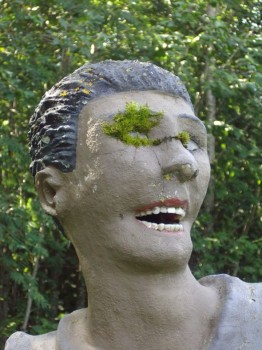
Moss lady: one of the 500 statues
Papermill worker Veijo Rönkkönen (1944–2010) lived all his life on a small, isolated farm in Parikkala, eastern Finland, close to the Russian border. In the 1960s he started sculpting statues in his free time which he placed in the garden around his house. The expanding statue park – take a look at the pictures! – was always open to visitors for free.
When the artist died, the Parikkala authorities were not willing to invest money in acquiring the garden and the park, a unique ‘total work of art’. Fortunately, it was bought by a businessman, Reino Uusitalo, founder of the Pyroll paper and cardboard company. An association now manages the park – and entry is still free. Rönkkönen’s outsider art continuously attracts nearly 30,000 visitors a year.
Over a period of fifty years, Rönkkönen created five hundred human and animal figures made of concrete. Living in his house in the middle of his garden, the artist avoided any contact with the thousands of people who came to wander in his extraordinary open-air gallery.
Now, thanks to Uusitalo’s generosity and the work of the association, the garden will keep growing – and the statues grow lichen and moss, ageing naturally.
![]()
Photographer and writer Veli Granö introduced the life and works of this self-made artist in his book Veijo Rönkkösen todellinen elämä / The real life of Veijo Rönkkönen (Maahenki, 2007): see Books from Finland‘s extract.
Do you speak my language?
23 August 2012 | Articles, Non-fiction
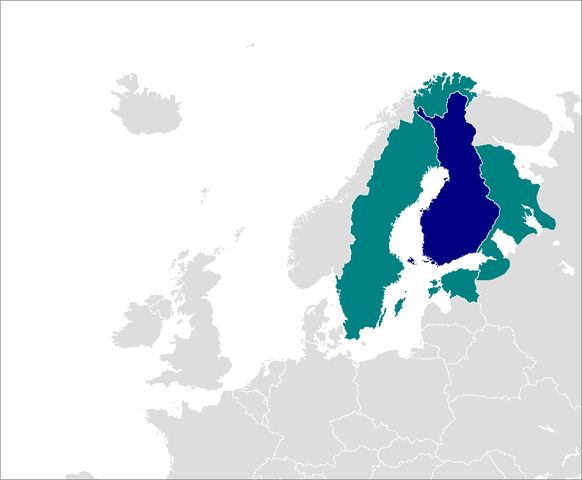
Finnish spoken outside Finland: Sweden (west), Estonia (south), Karelia/Russia (east), Norway (north). Illustration: Zakuragi/Wikipedia
Finland has two official languages, Finnish and Swedish. Approximately five per cent of the population (290,000 Finns) speak Swedish as their native language. All Finns learn both languages at school, and students in higher education must prove they have an adequate knowledge of the other mother tongue. But how do native speakers of Finnish cope with what is, for many of them, a minority language that they will never need or even wish to use? We take a look at bilingual issues – and a new book devoted to them
‘In many parts of the world, language can be a fiery and divisive issue, one that pits the powerless against the powerful, the small against the big. The Basques battle the Spanish. The Flemish tussle with the Walloons. The Québécois scuffle with the rest of Canada.’
That is how Lizette Alvarez illustrated her theme in her article ‘Finland Makes Its Swedes Feel at Home’, published in the New York Times in 2005.
In Finland, language has been a fiery issue at times, though things have cooled down a bit since the early 20th century. The use of Finnish as a written language dates back to the 16th century, but the territory of Finland was part of the Swedish Empire until 1809. Swedish was spoken by the nobility as well as most of the peasant class – the mechanism of the state did not serve Finnish-speaking peasants or other segments of the population in Finnish. More…
Egg in a Cage?
17 August 2012 | This 'n' that

Noises off: the Chapel of Silence. Photo: Mika Huisman/Decopic
A windowless wooden construction with a timber interior sits on a busy route between the bus and railway stations in the middle of Helsinki. The egg-shaped Chapel of Silence contains simple wooden benches, offering a moment of peace and quiet for anyone passing by.
Almost 12 metres high, 270 square metres in overall footprint, it is a sacral space, with a small cross and an altar at the back, but it is not intended for liturgical purposes – however, social services are available for private conversation during opening hours.
Helsinki is this year’s World Design Capital – together with the neighbouring cities of Espoo, Vantaa, and Kauniainen, and Lahti, a hundred kilometres to the north. Every second year the International Council of Societies of Industrial Design recognises one global city `for its accomplishments in utilizing design as a tool to improve social, cultural, and economic life’. More…
A library visit
17 August 2012 | In the news

Please come in: National Library of Finland. Photo: Kallerna/Wikimedia
Take a tour: browsing the online bulletin of the Finnish National Library, you’ll find a link (for iPad or other devices) which takes you inside the handsome main building, next to the Cathedral in the heart of Helsinki.
The library building, from 1845, was designed by the most important architect of the city, C.L. Engel.
The latest issue of the library bulletin includes articles on research, conservation and digitisation of the library collections as well as news and pictures.
Two to tango
3 August 2012 | This 'n' that
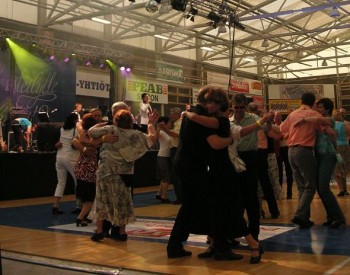
Tango: less romantic up north? Finns love it anyway. Photo: Orfeuz, Wikimedia
Picture the scene: it’s August, and the nightless days of midsummer have given way to darkening evenings. Candles are lit, and minds turn to the winter ahead.
The berries of the rowan trees are already turning bright scarlet and the purple rosebay willow herb catches the last of the sunset. From an outdoor dance floor across the meadow drift the melancholy strains of… the Finnish tango.
(The YouTube insert is from the film Tulitikkutehtaan tyttö [‘The matchbox factory girl’, 1990], by Aki Kaurismäki, featuring the actress Kati Outinen. Satumaa [‘Wonderland’ by Unto Mononen] is sung by Reijo Taipale.)
Cheesy as it is, we confess we have a liking for this most northerly cousin of the fiery Argentine original. So, it seems, does the BBC Magazine, in a recent article, Mark Bosworth goes to witness the traditional Tango Festival in Seinäjoki. Check it out. More…
Smart Moomins
27 June 2012 | This 'n' that
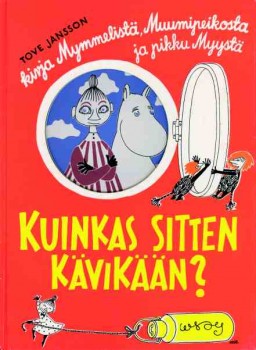
From page to screen: Tove Jansson's classic
‘Here’s little Moomintroll, none other,
Hurrying home with milk for Mother,’
are the opening lines of Tove Jansson’s classic 1952 illustrated children’s tale of a sister lost and found, The Book about Moomintroll, Mymble and Little My, in the English poet and novelist Sophie Hannah’s beguiling translation. (Swedish original: Hur gick det sen? Boken om Mymlan, Mumintrollet och Lilla My; illustration: the Finnish version.)
The book has now been released as a smartphone app by the London publisher Sort Of Books and Helsinki’s WSOY in collaboration with the Finnish developer Spinfy.
At the tap of a finger, birds fly, forest creatures crawl up and down tree-trunks, flowers open and close, fish jump and hattifatteners wiggle. Unlike in the Japanese animated cartoons that have done so much to make the Moomins well-known worldwide, this is achieved without doing any violence to Jansson’s original graphics.
The app can be played either in text or, for very small children, read-to mode, voiced by the actor Sam West. Three more Moomin apps are scheduled for release later this year.
Tweet! Oink! Ow!
14 June 2012 | This 'n' that

Fan fun: Angry Birds theme park, Tampere. Photo: Hildi Hawkins
For anyone who’s not a fan, it can be hard to see what has made the Finnish-born game Angry Birds the number one paid smartphone app in the world.
Catapulting wingless birds at pigs seems an unlikely route to hours of focused fun; but then, the same could seem true, prima facie, of moving a set of unrelated figures around a chequerboard according to some rather arbitrary rules. There are similarities, though – as 10-year-old Sophia said, ‘Angry Birds is a lot like chess – only more fun.’
So, when the most junior members of the Books from Finland editorial team – Max (3), Tia (6) and the above-mentioned Sophia (see their previous review here) – discovered that the world’s first officially sanctioned Angry Birds theme park was opening during their visit to Finland, it was obvious they had to be there for the occasion.
Friday 8 June was a fabulously sunny day for a trip to Tampere, Finland’s second city, and its famous Särkänniemi fun fair, on a spectacular location between two lakes. Angry Birds Land was packed with the nursery- and primary-aged children it’s intended for. More…
Art for art’s sake
8 June 2012 | Letter from the Editors
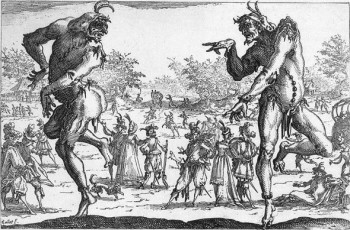
Art, entertainment for the elite? ‘The two pantaloons’ by Jacques Callot (1616). Etching, British Museum. Picture: Wikimedia
It is the necessity, or the obsession, of the present age to measure everything in monetary terms: to know as exactly as possible how much money something is capable of making for the owner of its ‘rights’.
This also applies to various fields of art: for example, a play is expected to make profit for its producers – today also in the case of ‘uncommercial’ institutions such as National Theatres. Seats must be sold; bringing in busloads of people is a must.
But the purpose of creating art is not to increase the GDP. Art is not useful, as theatre director and playwright Esa Leskinen argues in a recent essay (in Finnish only): ‘Art doesn’t aspire to anything. Art isn’t something that is consumed in order to gather the energy to go on working. The purpose of art is not to burnish the image of Finland or make people feel good. Art is radically other than the field of sense and utility in which our everyday world is located.
‘There is no sense in art. Art is no use.’
We agree. We also think that’s how it should be. More…
Funny in favour (again)
8 June 2012 | In the news
The May list of best-selling Finnish fiction titles, compiled by the Finnish Booksellers’ Association, still features two novels about a grumpy old man (see In the news) by Tuomas Kyrö (a grumpy young man): Mielensäpahoittaja ja ruskeakastike (‘Taking offence and the brown sauce’) and Mielensäpahoittaja (‘Taking offence’, both WSOY) were number one and two.
Number three was a work by a classic humorist: Veikko Huovinen (1927–2009) was a highly original and versatile writer whose career lasted almost for 60 years. A selection of his short prose from 1950 to 2001, previously unpublished or published in various magazines, appeared in May: Luonnonkierto (‘Nature’s cycle’, Siltala) immediately shot up to the third place on the month’s list. (You’ll find one of these texts coming up next on this site!)
As summer was approaching at last, the non-fiction list featured several books on birds, grilling and cooking – as well as aphorisms and other food for thought, traditionally bought for young people graduating from school.
What Finland read in April…
18 May 2012 | In the news
…was Tuomas Kyrö mostly, it seems: at the top of the April list of best-selling fiction titles in Finland, compiled by the Finnish Booksellers’ Association, was his novel Mielensäpahoittaja ja ruskeakastike (‘Taking offense: the brown sauce’, WSOY).
In March, Kyrö (born 1974) already featured twice on the list: his first novel about a 80-something man, Mielensäpahoittaja (‘Taking offense’, WSOY, 2010) was number two, and the newly-published sequel, Mielensäpahoittaja ja ruskeakastike had shot up to sixth place. In April they changed places – with the audio book version of the brown sauce book at number five.
This mielensäpahoittaja, ‘he who takes offence’, lives in the countryside and opposes most of what a contemporary lifestyle has to offer. Finns are evidently highly amused by the opinions of this obstinate, grumpy old man. But the popularity of Kyrö’s literary creation may also be boosted by the fact that he currently takes part in a television talk show every week, entertaining the audience and his fellow guests with his often acerbic remarks.
A crime novel by Seppo Jokinen, Hervantalainen (‘The person from Hervanta’, Crime Time), occupied third place, Tarhapäivä (‘Kindergarten day’, Otava) by Eve Hietamies fourth.
On the non-fiction list Solzhenitsyn’s The Gulag Archipelago, republished by Silberfeldt in April, was already in third place; we published a news piece about it on 25 April.
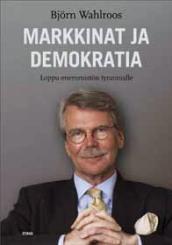 The non-fiction list was topped by a new, controversial book by banker – and one of the richest men in Finland – Björn Wahlroos, Markkinat ja demokratia. Loppu enemmistön tyrannialle (‘Market and democracy. The end of the tyranny of the majority’, Otava). He favours the methods of Margaret Thatcher’s economic policy and opposes social benefits for the poor; according to him, the market economy is superior to democracy any time.
The non-fiction list was topped by a new, controversial book by banker – and one of the richest men in Finland – Björn Wahlroos, Markkinat ja demokratia. Loppu enemmistön tyrannialle (‘Market and democracy. The end of the tyranny of the majority’, Otava). He favours the methods of Margaret Thatcher’s economic policy and opposes social benefits for the poor; according to him, the market economy is superior to democracy any time.
Archive news!
11 May 2012 | This 'n' that
We’re delighted to be able to announce that the selection of the material published on the web pages of Books from Finland in the last phase of its existence as a printed journal, 1998–2008, is now available on this website.
The monthly archive selection has been extended back to 1998, and more than two dozen new contributor details have been added. Plus, any term you enter in the search box at the top right of the webpage will now look through everything we have online – not just what has been published since we went digital in 2009. So if you vaguely remember a piece about xx, or just want to play games by seeing how often we’ve featured yy, just enter your term in the search box and away you go.
This is just the first step in our bigger project of digitising a broad selection of pieces from Books from Finland‘s history, from 1976 (when it began to appear as a quarterly journal) onwards. The Books from Finland archive – 132 printed issues were published from 1976 to 2008, featuring hundreds of authors – represents an unparalleled treasure trove of Finnish literature and literary debate in English, and we can’t wait to get as much as we can online.
It is a long, slow process, so don’t hold your breath… But as we add new pieces we’ll be flagging them up and drawing them to your attention, from classics to some real period pieces, sometimes with new introductions by contemporary writers.
Watch this space – please remember, good things are worth waiting for!

